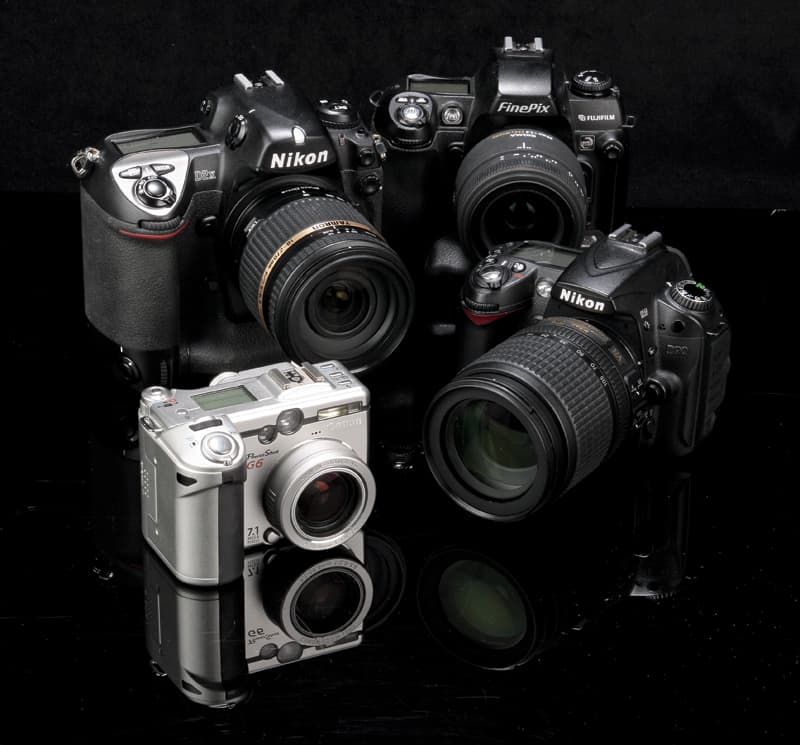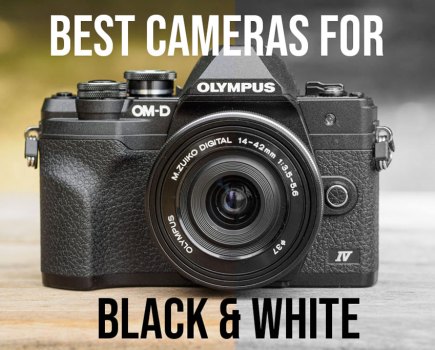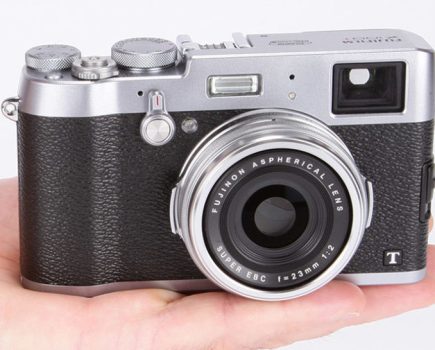Digital camera production shows no sign of slowing, with models updated and replaced as frequently as every year. The early days of digital imaging saw significant changes with each model, while the mounting pixel race caused older cameras to pale into insignificance. Over the past few years, however, changes have become less extreme and, looking back, past models are still very usable. The second-hand market has grown for this reason, and it is possible to pick up a previously expensive model for a very reasonable price.
For this challenge we chose four digital cameras, from a professional DSLR to an advanced compact, that were once top of their game, to see if they are as fun to use and deliver as great an image as we remembered. There were many cameras that were considered for this challenge, and it was a tough decision as to which to leave out. At the professional end we chose the Nikon D2X, in the advanced semi-professional category the Fujifilm FinePix S3 Pro, as an enthusiast DSLR the Nikon D90 and for an advanced compact the Canon PowerShot G6. We loaded up the cameras with fresh memory cards and headed out for a day’s shoot.
Nikon D2X at a glance:
- 12.4-million-pixel, APS-C CMOS sensor
- ISO 100-800
- 2.5in LCD screen with 235,000-dot resolution
- 5fps or 8fps in cropped mode (6.8 million pixels)
- Viewfinder with 100% coverage and 0.86x magnification
- 1,070g (without battery/card)
- 157.5 x 149.5 x 85.5mm
- Nikon F mount
Mid-2004 saw the introduction of the D2X as Nikon’s flagship DSLR, replacing the company’s long-standing (and rather dated) D1X. The D2X’s 12.4-million-pixel, APS-C-sized sensor was range-leading at the time, making it a favourite with studio photographers. Indeed, the D2X was priced out of reach for all but the professional, at around £3,500. Its 2006 successor, the D2Xs, had just minor changes, and most of its improvements could be achieved on the D2X via a firmware upgrade. It was only through the introduction of the full-frame D3 (2007), D700 (2008) and D3X (2008) that we moved on from the D2X.
The professional-level D2X has a weather-sealed, magnesium-alloy body designed to repel dust and moisture, and its large form includes a large-capacity EN-EL4 1900mAh battery, bottom LCD panel for ISO, white balance and image size controls, and a similar button layout for switching between portrait and landscape-format shooting.

Image: The DSX uses an APS-C sensor, so the camera works well with Nikon’s 18-200mm lens. Here the maximum focal length is a 300mm equivalent
It may be eight years old, but aspects of the camera’s handling, button layout and styling are still evident on Nikon’s current professional-level cameras. Those familiar with a high-end Nikon DSLR will be at home with the D2X. It is a responsive camera with minimal shutter lag measured at 0.03secs, and a speedy camera with full resolution 5fps capture, or 8fps in 6.8-million-pixel crop mode.
The LCD screen is the biggest telltale sign of age. Its 2.5in size and 235,000-dot resolution cannot compete with its successors, especially given that it offers only a 2x magnification, which means examining images in-camera is tricky. Also, the D2X does not offer live view or video recording.
The D2X uses an APS-C-sized sensor like that used in the company’s current entry and enthusiast-level DSLRs. Its 12.3-million-pixel resolution and sensor size (and therefore image quality) are similar to that of the D300S. The D300S has been around since 2009, and its updated sensor performs better in low light, offering a native ISO 200-3200 range (expandable to ISO 100-6400). Those who shoot in low-contrast light will be restricted by the D2X’s ISO 100-800 range (which has two extended ‘Hi’ settings), whereas the latest flagship Nikon model, the D4, offers an extended setting up to ISO 204,800.

Image: With a maximum setting of ISO 800, a tripod was necessary for this evening image
Today, the D2X no longer cuts the mustard for most studio photographers. Nikon’s professional-level cameras use a full-frame sensor. This larger sensor area is able to collect more light than an APS-C unit, which is ideal for low-light work and gives greater control over depth of field. Current Nikon models also have higher resolutions, at 16.2 million pixels (D4) and 36.3 million pixels (D800). However, those looking for a camera with excellent build quality, handling, long battery life and strong image quality in good light will be satisfied with the D2X.
As with all professional cameras, when buying a second-hand D2X check the number of shutter actuations, because these cameras have often been used extensively and the shutter could be near the end of its life. The number of actuations is a key factor in the pricing of second-hand models: those that have a high count can be found for under £500, which is a staggering price for what once sat at the top of Nikon’s DSLR range, and a similar price to a second-hand, enthusiast-level D300. Expect to pay nearer £700 for a D2X in excellent condition and with a low actuation.
Thanks to Grays of Westminster (www.graysofwestminster.co.uk) for providing the Nikon D2X used in this test
Find the best deals for the Nikon D2X
Fujifilm FinePix S3 Pro at a glance:
- 12.34 million pixels (6.17m S pixels + 6.17m R pixels) SuperCCD SR II sensor
- ISO 100-1600
- 2in, 235,000-dot LCD
- 2.5fps shooting
- Viewfinder with around 94% coverage
- 835g (without battery/card)
- 148 x 135 x 80mm
- Nikon F mount
Back in 2004, the predecessor to the Fujifilm FinePix S3 Pro, the S2 Pro, was the camera of choice in the office. We really enjoyed using it, despite its slight idiosyncrasies, but when the S3 Pro came along it was an altogether sleeker camera, bringing an advanced new sensor, a bigger LCD and a more efficient battery system.
When the S3 Pro was launched in 2005 (having been announced almost a year earlier), it had an RRP of £1,600, which priced it slightly above most other enthusiast DSLRs of the day, such as the Canon EOS 20D and Nikon D70. However, it remained significantly cheaper than professional models like the Nikon D2X. This appealed to wedding photographers and semi-pro shooters, and as it used the Nikon F mount it made a great camera for Nikon users converting to digital for the first time.
The camera featured a new SuperCCD SR II sensor, which had separate S and R photodiodes that captured an extended dynamic range, and unlike the original SR version, these R diodes sat separately in between the S diodes, allowing each to be bigger. The sticking point was the sensor’s exact resolution: it had 12 million photodiodes, but used the combination of the S and R diodes to create a single pixel of the image and, therefore, a total of just 6 million pixels. These were then interpolated in the camera to create a 12-million-pixel file (for both raw and JPEG). This, to the reviewers and retailers, meant it was a 6-million-pixel camera, which proved a disadvantage in the pixel race.

Image: With a maximum setting of ISO 800, a tripod was necessary for this evening image
The S3 Pro’s design was curvier than its predecessor, and featured a proper vertical grip built into the body, complete with vertical shutter button. The previous dual-battery configuration was ditched in favour of a simple 4x AA set-up, although this meant the power previously supplied by the additional two CR2 batteries now had to come from AA units.
The larger build of the S3 Pro is nice in the hand, and provides easier shooting in portrait format than most cameras thanks to the extra shutter button and comfortable grip. Despite the size, it is not quite as heavy as a professional body and therefore doesn’t weigh you down over a day’s shooting.
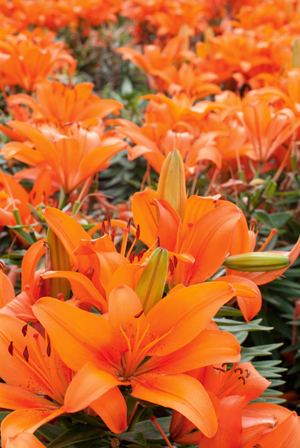
Image: Taken with a 50mm macro lens, colour rendition from the S3 appears natural
The camera’s 2in, 235,000-dot LCD screen is quite difficult to see, especially behind the protective plastic screen guard, and using the main menu required finding a shaded area first. One nice feature, though, is the additional info screen on the rear, which negates using the main menu for most features. The viewfinder is nice and bright thanks to the pentaprism, but the 0.86x magnification and around 94% coverage makes it feel quite small.
Images from the S3 Pro are generally impressive. Although they lack the resolution I would expect from a more recent camera and are more prone to fringing, the colours are natural and appear nice and sharp. Despite the dual photosites, the dynamic range is still quite limited compared to modern CMOS sensors. The shutter and mirror movements feel much more gentle than those of modern cameras.
The one downside of the S3 Pro is its use of AA batteries. The battery meter is quite erratic at times, falling from full to empty within a few shots, and then rising again after a brief pause. Whether an issue of power usage or capacity of the AA units, you can end up with fewer than 200 shots per charge, especially as the rechargeable units age. For a student wanting to learn more about photography, the Fujifilm FinePix S3 Pro would be a great choice, especially considering the current price and its Nikon lens mount.
Thanks to LCE Guildford (www.lcegroup.co.uk) for providing the Fujifilm S3 Pro used in this test
Nikon D90 at a glance:
- 12.3-million-pixel CMOS sensor
- ISO 200-3200 (ISO 100-6400 extended)
- 3in, 920,000-dot LCD
- 4.5fps shooting
- Viewfinder with 96% coverage and 0.94x magnification
- 620g (without battery/card)
- 132 x 103 x 77mm
- Nikon F mount
Despite being launched back in 2008, the D90 remains on Nikon’s current model list and can still be bought new in many stores. This long life is testament to the popularity of the model. After four years, though, and with a model number that doesn’t fit with the four-figure arrangement of all the other DSLRs in the Nikon range, it won’t be long before it finally bows out. However, its second-hand demand is likely to continue for some time.

Image: For more contrasting scenes, negative exposure compensation is necessary to retain highlight detail
The D90 replaced the D80, updating the sensor from 10 million to 12 million pixels, and brought Nikon’s sensor-cleaning system from the D300 to shake the dust off the sensor. The biggest feature this camera introduced, however, was video. The D90 was the first DSLR to feature movie capture and did so with a 1080x720p HD resolution at 24fps with mono sound. With video also came live view and contrast-detection AF for composing via the new large 3in, 921,000-dot screen, also from the D300.
Other features to surface on the D90 included 3D tracking, Active D-Lighting and face detection (in live view mode). From the overall specifications, the D90 still sits between the D5100, and D3100 models, depending on the features you are looking at, and while it can’t compete on resolution with the likes of the new D3200, it has a body closer to the D7000. Its price of around £699 new is unlikely to tempt people away from any of these models, but its second-hand value of around £400 will be attractive to some.
Using the D90, it’s easy to forget that this camera is more than four years old, as it feels and handles as well as many more recent models. The 11-point AF system is more than adequate for most scenes and snaps into focus quickly and quietly. The viewfinder has a decent 96% coverage with a pentaprism and, thanks to the 0.94x magnification, looks nice and large for composing. The camera is compact but fairly weighty with an aluminium and plastic body. One benefit over some of the more recent models is that it feels much more manual, with front and back finger dials and a large top LCD for shooting information. The only other consumer Nikon DSLR to do this is the D7000.
When looking at the images, the levels of luminance noise give away the age of this camera, with even ISO 1600 showing significant signs. However, the ISO 6400 setting retains its colour and definition, and with some noise reduction is still usable. Metering appears to be an area that Nikon has improved with its more recent models, as the D90 has a habit of losing the highlights – negative exposure compensation is necessary for more contrasting scenes. Second-hand D90 models are in high demand, but if you can find one in good condition for less than £400 it is worth snapping it up.

Image: The D90’s 11-point AF system is more than adequate for most scenes and reacts quickly
Find the best deals for the Nikon D90
Canon PowerShot G6 at a glance:
- Canon PowerShot G6
- 7.1-million-pixel (1/1.8in) CCD sensor
- ISO 50-400
- 2in, 118,000-dot LCD screen
- 35-140mm f/2-3 Canon lens
- Optical viewfinder
- 467g
- 105x73x73mm
- USB 1.0 transfer speeds of 1.5Mbit/sec
The Canon PowerShot G series has been around since 2000, and is now onto its tenth model, the G12 (there is no G4 or G8 because Japanese firms avoid these numbers). Another model, the PowerShot G1 X, is currently available alongside the G12, but is a departure from the series and features a larger imaging sensor.
The PowerShot G6 was announced in 2004 and replaced two years later. The G7 arguably showed the most dramatic makeover of any of the PowerShot G models. All the cameras up to the G6 use a 1/1.8in (7.14×5.36mm) CCD sensor, feature an articulated LCD screen, top LCD panel, fast f/2 lens, and store raw and JPEG images on a CompactFlash card. In fact, the G6 came supplied with a 32MB CF card, enough for four full-resolution, 7.1-million-pixel images. With the launch of the G7, the specification changed drastically.

Image: Taken at ISO 200, luminance noise is already evident in this image, although it is uniform in appearance, and similar to grain
As with its G5 predecessor, the G6 has a 35-140mm f/2-3 lens, Digic processor and 118,000-dot LCD screen, although the screen is slightly larger at 2in. The G6 is significantly lighter than the G5, and has an increased resolution, from 5 million to 7.1 million pixels. The G7 saw dramatic changes, such as a larger-sized 1/1.7in sensor with 10 million pixels, a maximum ISO 3200 setting, 35-210mm f/2.8 lens (with 1cm macro mode), Digic III processor, 207,000-dot LCD screen, SD memory card storage, a different battery type and was again much lighter. PowerShot G-series models have never been compact, however, with many current compact system cameras
smaller and lighter.
While the latest versions of the camera have slimmed down, the downside of this is that the supplied battery cannot match the battery capacity of the G6. The official Canon BP-511A battery used by the G6 has a large 1390mAh capacity, which exceeds most of today’s compacts. The G6 may be chunkierthan more recent models, but its well-pronounced handgrip is preferable to the slimline form of its successors.
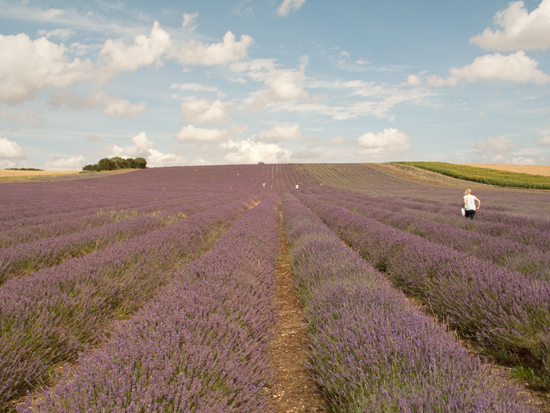
Image: The dynamic range of the G6 is very good, with plenty of detail retained in the sky here
A modern CSC with a 3in, 921,000-dot LCD screen was tested alongside the Canon PowerShot G6, and the difference between the screens is staggering. The G6’s screen is noticeably smaller and its 118,000-dot output duller. It is difficult to view images clearly until they are on the computer screen at the editing stage. The G6’s built-in optical viewfinder does not have a 100% field of view, so accurate framing is difficult and it displays pronounced fringing.
When it comes to image quality, the G6 makes the most of its excellent lens. For a ‘compact’ camera, the quality of detail in real-world images is good even by today’s standards, and full-resolution files are perfectly sufficient for A4 prints, even up to A3 by reducing the print resolution in the image size. Image capture is, however, much more limited given the ISO 50-400 range. For those using the camera in good light this will not be an issue, and there are few cameras today that go as low as ISO 50. The Canon PowerShot G6 is fun to use and, available for as little as £80 second-hand, it is something of a bargain.
Thanks to SRS Microsystems (www.srsmicrosystems.co.uk) for providing the Canon PowerShot G6 used in this test

